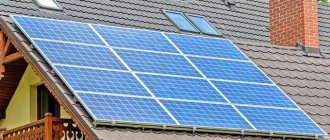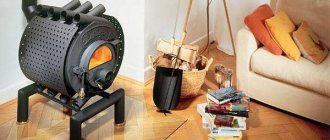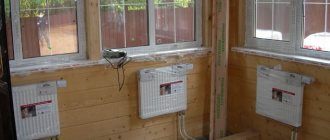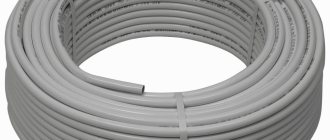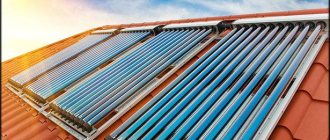Our company offers to buy water heaters, split systems and solar collectors for heating water and autonomous heating systems at a competitive price. The company's catalog presents a large assortment of heating and hot water equipment of various capacities produced in Russia, China and Austria. All solar collectors and instantaneous and storage water heaters (boilers) have a quality guarantee.
Research has established that on a clear day, in 1 hour, 1 m2 of the Earth's surface receives about 1000 watts of energy from the sun. These data are averaged and depend on the latitude and time of year. Modern solar collectors allow you to partially capture this energy and use it for the needs of your home, office, or business. In this case, there is no need to use fuel.
Advantages of using solar systems
Installing solar collectors will significantly reduce the cost of traditional heating. Solar energy is free, and in addition, solar systems do not harm the environment. That is why in countries where authorities are concerned about the environment, this method of heating houses is widespread (read: “Do-it-yourself solar system”). Massive use of solar systems will save resources that are traditionally used for heating (coal, natural gas) and solve the energy problem.
Solar heating has the following advantages:
- efficient operation and significant savings on the main heating system of the house;
- safety of use;
- long service life;
- aesthetic appearance, the ability to select collector parameters.
Where can I buy
A solar collector is a product that can only be purchased from specialized organizations and companies that either produce similar devices or are focused specifically on selling equipment that runs on alternative energy sources.
The most correct way to purchase is to find a dealer of the manufacturer of a specific device model, and then conclude an appropriate purchase and sale agreement with him. If there are no dealers of companies producing solar collectors in the region where the potential buyer lives, then you can find an organization that specializes in this group of products. These two purchase options are the most optimal, because... specialists from such companies can provide assistance in choosing a model and suggest how to perform installation.
If the above listed acquisition methods cannot be carried out, then you can turn to the Internet, where a fairly large number of companies operating specifically in this area of energy are represented. The advantage of this purchasing method will be the lower cost of the products, but the negative point is that there will be no advice or tips on choosing a model and its installation; you will have to decide everything yourself.
Features of solar collectors
Solar heating systems for a private home are most effective in regions where there are a large number of sunny days throughout the year. In addition, in winter the sunlight should also be quite intense. When installing such a heating system, the following features must be taken into account. In order for the heating design to be effective, it is necessary to properly insulate the house. It is recommended to combine solar heating with other types - gas or electric - this is the best option. Integration of solar system elements into a traditional heating scheme significantly increases the heating efficiency of a home and reduces material costs.
In regions characterized by low levels of insolation (the flow of sun rays onto a horizontal surface), it is necessary to correctly calculate the area of the collectors and strictly follow the installation instructions so that the system works as efficiently as possible. Experts recommend installing collectors at an angle equal to the geographic latitude of the area, in which case they will be more efficient. The fact is that the maximum level of absorption of solar energy occurs if their surfaces are at right angles to insolation.
When determining the degree of ray flux, it should be remembered that its intensity is much higher in the middle of the day. Therefore, it is advisable to place the surfaces of solar panels for heating a house in a southerly direction. Minor deviations in the south-east and south-west directions are acceptable. When installing collectors, it is necessary to ensure that they are not shaded by trees or neighboring buildings.
When organizing solar heating with your own hands, you need to slightly increase the angle of inclination to increase the efficiency of these devices in winter. At the same time, in the summer, the efficiency of the system will decrease slightly, but this is acceptable, since in any case there will be an excess of thermal energy.
Device types
To convert solar energy into thermal energy, special technical devices called collectors are used. Depending on the design, they can be divided into two types:
- Flat-plate collectors - this design is based on a flat box, closed on the outside with glass, in which tubes are placed through which the coolant circulates. Insulation is laid between the tubes, and an absorber is laid under the glass, a material that has the ability to accumulate thermal energy. The collector is connected to the external network through pipes mounted at the inlet and outlet of the pipes being laid.
- Vacuum collectors - this group of devices is based on the use of vacuum tubes, which are mounted on a special frame and their upper part is placed in the coolant layer. The vacuum tube consists of two tubes, one of which is copper, placed in a larger glass one. A material with a high degree of absorption is placed in the interior of the glass tube. The air is evacuated from the glass tube, thereby creating a vacuum, which improves the characteristics of the device in terms of heat accumulation and transfer.
There is another type of solar collectors, these are flat air devices. In this design, air is used as a coolant, but due to the low efficiency of such models and inefficiency, such collectors are practically not used for heating houses.
How the system works
There are different types of collectors, and although the principle of operation of each of them is almost the same, there are still some differences between them. In this case, the operation of a homemade coil system will be considered. Solar heating on clear days provides water heating up to 70 degrees. Water circulation in the systems occurs naturally. Water heated in the collector, due to a decrease in density, moves upward into a special tank. Cold water, which has a higher density, moves to the bottom of the solar panel. After this, the process is repeated. A schematic representation of such a system can be seen in the photo.
Average prices
At the moment, a fairly large number of companies from different countries of the world are represented on the market of solar systems used for heating and hot water supply. The cost of the models depends on the type of collector, its technical characteristics and the company that produces it. Average prices for the most popular models are:
- Products (Germany):
- Models “auroTHERM plus VFK 135/2VD” and “VFK 135/2D” are a flat solar collector with an area of 2.51 m2. The cost is from 60,000.00 rubles.
- Model “auroTHERM exclusiv VTK 570-1140” is a vacuum manifold, with an area of 1.0 m2 - cost from 73,000.00 rubles, and with an area of 2.0 m2 - from 145,000.00 rubles.
- Solar collectors (Italy):
- Model “KAIROS CF 2.0 ARISTON”, flat collector, area 2.0 m2. Cost – from 37,000.00 rubles.
- Model “KAIROS VT 15B ARISTON” is a vacuum model, costing from 86,000.00 rubles.
- Products (China):
- Model “FPC-1200d” is flat type, with an area of 2.01 m2. Cost from 25,000.00 rubles.
- Model “ES 20R-5” is a vacuum type, costing from 36,000.00 rubles.
- Products (Russia):
- Model, article 2900152 – flat solar collector, area 2.0 m2. The cost is from 21,000.00 rubles.
- Model “VU-10” is a vacuum type, costing from 23,000.00 rubles.
Classification of a home heating system according to the type of heating equipment used
More acceptable and traditional for domestic consumers are those heating systems that operate from a boiler. There are options when the heating system is not centralized, but each of its components (radiator or convector) acts as an autonomous heating device.
Boilers
The most popular heating devices are gas boilers. Their advantages are the availability and low cost of energy, a wide range of boiler capacities, and its versatility (the device works not only to heat the house, but also to prepare hot water).
Important! There are models of heating devices that are characterized by high efficiency and low gas consumption. Any gas boiler has a built-in safety control system
Disadvantages - the mandatory presence of main gas (in some regions the pipeline is not laid), the high cost of connecting the boiler and drawing up the project, the difficulty of obtaining permission to operate gas equipment.
From an environmental point of view, solid fuel boilers are the safest.
The second option is boilers running on solid fuel. The fuel used is firewood, peat, charcoal and coal, recycled raw materials - pressed sawdust, etc. Advantages - complete safety from an environmental point of view. Solid fuel boilers are often multifunctional units that can heat water for domestic use.
Disadvantages - the need for constant human control, constant and mandatory fuel procurement, arrangement of large-volume boiler houses
The next option is liquid fuel boilers. The energy carriers used here are diesel fuel, petroleum products, waste oil, and liquid biofuels. Advantages: fully automated operating principle, high level of safety. Liquid fuel boilers remain the most cost-effective in terms of fuel purchases. Such units, if desired, can be reoriented to work with another type of fuel. To do this, just replace the burner.
Disadvantages are the high cost of equipment and the need to equip a large boiler room.
Tips for use
- The operation of a solar heating system is carried out in accordance with the design of the collectors, their number and other features.
- The main task for the owner is to maintain cleanliness and timely removal of dust and other contaminants . This allows for maximum thermal energy intake and increases the efficiency of the entire system as a whole.
- It is necessary to properly insulate all connecting pipelines and storage tanks , excluding heat loss.
- It is recommended to always keep one or two panels in reserve so that in case of mechanical damage you can quickly replace them. Following these simple recommendations will increase the efficiency of the system and ensure comfort and coziness in the home.
How to choose?
Installing a solar system on your own site will cost a decent amount. Before you begin installing a solar panel, you need to determine the required power for all devices. And first of all, it is necessary to calculate the optimal peak load in kilowatts and the rational conditional average energy consumption in kilowatt/hours to meet the needs of the house or site.
To rationally use solar electricity, it is necessary to determine:
- peak load - to determine it, it is necessary to add up the power of all devices turned on simultaneously;
- maximum power consumption - a parameter necessary to determine the category of devices that should operate at the same time;
- daily consumption - determined by multiplying the individual power of a single device by the time during which it worked;
- average daily consumption - determined by adding up the energy consumption of all electrical appliances for one day.
All this data is necessary for the configuration and stable subsequent operation of the solar battery. The information obtained will allow you to select more suitable parameters for the battery pack - an expensive element of the solar system.
To carry out all the calculations, you will need a sheet of paper or, if you prefer to work on a computer, it will be most convenient to use an Excel file. Prepare a table template with 29 columns.
List the names of the columns in order.
- The name of an electrical appliance, household appliance or tool - experts recommend starting to describe energy consumers from the hallway, and then moving around clockwise or counterclockwise. If the house has more than one floor, then the starting point for all subsequent levels is the staircase. And also indicate outdoor electrical appliances.
- Individual power consumption.
- The time of day starts from 00 to 23 hours, that is, for this you will need 24 columns. In the time columns, you will need to indicate two numbers in the form of a fraction: duration of operation for a specific hour / individual power consumption.
- In column 27, indicate the total operating time of the electrical appliance per day.
- For column 28, you need to multiply the data from column 27 by individual power consumption.
- After filling out the table, the total load of each device for each hour is calculated - the data obtained is entered into the 29th column.
After filling out the last column, the average daily consumption is determined. To do this, all the data in the last column is summed up. But this calculation does not take into account the consumption of the entire solar collector system. To calculate this data, it is necessary to take into account the auxiliary coefficient in the final calculations.
Such a careful and painstaking calculation will allow us to obtain a detailed specification of energy consumers, taking into account hourly loads. Since solar energy is very expensive, its consumption must be minimized and rationally used to power all devices. For example, if a solar collector is used as a backup power supply for a home, then the data obtained will make it possible to exclude energy-intensive devices from the network until the main power supply is finally restored.
To continuously supply the house with energy from a solar panel, the hourly loads are moved forward in the calculations. Electricity consumption must be adjusted in such a way as to eliminate emergency situations during system operation and level out maximum loads.
This graph clearly shows how to rationally use solar energy in your home. The initial graph shows that the load was distributed chaotically throughout the day: the average daily hourly was 750 W, and the consumption rate was 18 kW per hour. After accurate calculations and competent planning, it was possible to reduce the daily consumption to 12 kW/hour, and the average daily hourly load to 500 W. This energy distribution option is also suitable for backup power supply.
Real heating methods
As you understand from the above, it is quite difficult (and expensive) to implement full-fledged electric heating of a house with solar panels. Not every owner will decide to buy and install panels on an area of 100–150 m² in order to warm up a small house or cottage. This means that the circuit of electric boiler + water system + heating radiators is eliminated.
But the idea of heating with solar modules still cannot be called a utopia. We list the options implemented by homeowners in practice:
- panels plus inverter air conditioners with a COP efficiency of 3.5–4;
- connecting batteries directly to electric heaters without an inverter;
- construction of a full-fledged solar power plant, sale of electricity to the state, the proceeds go to pay for traditional heating.
Addition. There is no point in discussing the use of panels as additional energy sources for main heating - this is an obvious solution.
Let's start with the third option, which is of interest to entrepreneurs. In countries where the state has established a so-called feed-in tariff, the homeowner can receive electricity from renewable sources and feed it into the general energy grid, making a profit. That is, the homeowner purchases the same 200–300 solar panels, but sells the energy at a good price, rather than wasting it in vain.
Flat and vacuum convectors
The last thing we focus on is flat and vacuum solar convectors. They consist of tempered glass or polycarbonate, thermal insulation and pipes. Let's first note the advantages:
- very affordable price;
- performance is high, especially on sunny days;
- there is self-cleaning from snow in winter.
But it also has weaknesses:
- there is a possibility of a large amount of heat loss;
- quite complicated installation.
As for vacuum ones, their operating principle is more like a thermos. It is this design that retains about 96% of the heat it accumulates. Let's highlight its strengths and weaknesses, starting with the pros:
- high heating temperature;
- easy installation;
- low heat losses;
- reliable system.
Now it's time to see the weaknesses:
- expensive;
- need to be installed at a certain angle;
- You need to clean the snow from the system yourself.
Method for increasing productivity
Usually, after experimenting with a small number of solar modules, private home owners go further and improve the system in various ways.
The easiest way is to increase the number of modules involved, accordingly, attract additional space to accommodate them and purchase more powerful related equipment
What to do if there is a shortage of free space? Here are some recommendations for increasing the efficiency of a solar station (with photocells or collectors):
- Changing the orientation of modules. Moving elements relative to the position of the sun. Simply put, installing the bulk of the panels on the south side. During long daylight hours, it is also optimal to use surfaces facing east and west.
- Tilt angle adjustment. The manufacturer usually indicates which angle is most preferable (for example, 45º), but sometimes during installation it is necessary to make adjustments taking into account geographic latitude.
- Correct choice of installation location. The roof is suitable because it is most often the highest plane and is not obscured by other objects (for example, garden trees). But there are even more suitable areas - rotating sun tracking devices.
When the elements are positioned perpendicular to the rays of the sun, the system works more efficiently, but on a stable surface (for example, a roof) this is only possible for a short period of time. To increase this, practical tracking devices have been invented.
Tracking mechanisms are dynamic platforms that rotate with their planes following the sun. Thanks to them, generator productivity increases by about 35-40% in summer, and by 10-12% in winter.
The big disadvantage of tracking devices is their high cost. In some cases, it does not pay off, so there is no point in investing in useless mechanisms.
It is estimated that 8 panels is the minimum number at which the costs will be justified over time. You can use 3-4 modules, but under one condition: if they are directly connected to the water pump, bypassing the batteries.
Just the other day, Tesla Motors announced the creation of a new type of roof - with integrated solar panels. Elon Musk said that the modified roof will be cheaper than a conventional roof with collectors or modules installed on it.
